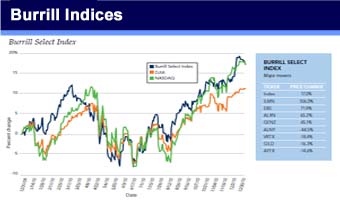Discussions about healthcare have been at the core of the presidential election in the United States, but concern over the issue is global in scope. Earlier this year at the 2012 Swedish American Life Sciences Summit in Stockholm, a platform for interchange of U.S. and Swedish healthcare-oriented capital and innovation, reflected that dramatic change.
The summit’s theme was the increasing globalization of the life science, the healthcare industry, and the importance of cross-border collaborations. Several specific topics were discussed in detail, especially the soaring problem of diabetes and how the digital revolution will ultimately transform healthcare globally.
The United States spends around 17 percent of its GDP on healthcare and it is expected to increase that to 20 percent within the next 10 years. Speakers from the U.S. and key European and Asian countries emphasized the urgency of moving the life sciences and healthcare beyond the United States with more cross-border cooperation between research institutions, healthcare providers, the business community, governments, and international organizations. The Swedish-American Life Science Summit is a key player in this new global, cross-border dialog.
Michael Treschow, chairman of the board at Unilever, underscored the vital role of Sweden as an increasingly important intellectual hub for R&D and the importance of intimate cooperation between the business community, governments, universities, investors, NGOs, and international institutions. Treschow pointed to the rapidly growing development of more personalized healthcare, where many medical issues can to be handled from the home, from the computer or with the mobile phone. The pioneering role of Sweden could very well help shape similar progress in the developed markets as well as emerging and frontier markets.
Dr. Gary Phillips, Head of Healthcare Industries for the World Economic Forum, stressed the urgent need for greater global collaboration to achieve impactful results. There are many practical hurdles given the unique complexities and challenges with global healthcare issues, said Phillips. Nonetheless, he said, there is clearly a global trend of increased cooperation and more flow of capital to fund international life science and health care initiatives.
The United States spends more on healthcare than the rest of the world combined. But market opportunities are rapidly shifting to BRIC countries such as China and India, not only because they are the two most populous countries in the world, but also because their healthcare spending is soaring. Now that key foundations are in place, said K. Ganapathy, president of India’s Apollo Telemedicine Networking Foundation, improved distribution and health will follow, but initially sharing of information and education of possibilities are as significant. It is simply a matter of educating potential users and to make sure people understand digital health care and its potential, said Ganapathy.
China too is witnessing incredible growth in the healthcare sector, both in terms of production capabilities and personal healthcare coverage in the huge domestic Chinese market, said Zhiping Cui, Shanghai Fosun Pharmaceutical Group SVP and head of international investment. Fosun is China’s largest private conglomerate by revenue and is currently raising a $1 billion fund to increase its presence in global healthcare businesses and other industries.
Panel participants addressing the meeting’s focus on the problems posed by diabetes and obesity concluded that there needs to be an increased global campaign focused on awareness of the disease and to promote healthier diets. They emphasized the importance of increased global collaboration in finding new medicine and, in particular, in educating people of the risks, especially in the emerging markets, where access to junk food has increased significantly over the last decade.
More than 320 million people worldwide have type 2 diabetes and it is estimated that by 2025, this total is expected to increase to over 380 million people. The most rapid growth is currently taking place in Asia. Estimated global healthcare expenditures to treat and prevent diabetes and its complications are expected to total at least$560 billion in 2030.
Although the pace of diseases such as diabetes continues unchecked, speakers and panelists pointed out that the healthcare business is still run in a very old fashioned and inefficient manner: A person becomes sick and seeks care. Despite the imbalance between demand and supply, a majority of outcomes in such scenarios are positive. But the preponderance of technology, cross-border collaborations, and the ability to aggregate patient and disease data suggest an opportunity to shift focus to its proper place, with an emphasis first on preventive measures, then on cure and therapy, panelists said.
Dr. Tachi Yamada, former President of the Global Health Program at the Bill & Melinda Gates Foundation concluded the summit with a call to collaboration captured in the African proverb: “If you want to travel fast, travel alone. If you want to travel far, travel together.”
The theme of SALSS 2013, to take place in August, is expected to be “The Global Aging Dilemma: New Frontiers in Aging.” Worldwide today there are around 500 million people aged 65 and older. By 2050, that number is expected to rise to around 1.5 billion. Ehnbom mentions that in the continued effort to make SALSS even more global, the coverage and focus next year will include South America, in particular Brazil, as an important and vital emerging life science market. Add that to Sweden, Europe, U.S., and Asia.
The Swedish American Life Sciences Summit is a content partner of The Burrill Report
November 30, 2012
http://www.burrillreport.com/article-collaboration_critical_to_address_global_health_challenges.html





.gif)